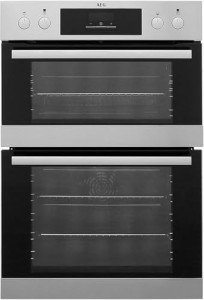The Comprehensive Guide to Built-In Ovens
Intro
Built-in ovens are a staple in modern cooking areas, combining elegance with performance. integrated double oven and hob offer a streamlined visual and effective cooking abilities, making them a preferred option for homeowners and culinary enthusiasts alike. This post digs into the advantages of built-in ovens, their different types, essential features to think about, setup tips, and maintenance recommendations, in addition to frequently asked questions.
Benefits of Built-In Ovens
Built-in ovens featured a selection of advantages that contribute to their popularity. Here are some key advantages:
- Space-Saving Design: Built-in ovens are created to fit flawlessly into cabinetry, allowing for a more orderly and space-efficient kitchen layout.
- Visual Appeal: They supply a smooth and contemporary look that can improve the general style of the kitchen.
- Enhanced Functionality: Built-in ovens typically come with innovative functions and technologies that support various cooking methods.
- Enhanced Cooking Experience: Many built-in models consist of self-cleaning functions, temperature level probes, and programmable settings, improving the cooking experience.
- Increased Property Value: A properly designed kitchen with built-in appliances can improve the value of a home.
Types of Built-In Ovens
Built-in ovens can be found in several types, each created to satisfy different cooking choices and requirements. Here are the main types:
| Type of Built-In Oven | Description |
|---|---|
| Single Oven | A single, standalone oven for conventional baking and roasting. |
| Double Oven | Combines two ovens in one system, enabling numerous meals to cook at different temperature levels. |
| Wall Oven | Set up in the wall, maximizing counter area, ideal for little kitchens. |
| Stove | Uses fans to distribute hot air for even cooking, enhancing the outcomes of baked goods. |
| Steam Oven | Uses steam for much healthier cooking choices, protecting nutrients in food. |
Secret Features to Consider
When selecting a built-in oven, a number of functions can affect efficiency and use. Here are some essential features to bear in mind:
Cooking Modes
- Bake: Traditional baking with bottom heat.
- Broil: Top heat cooking suitable for browning and crisping.
- Convection: Circulates hot air for even cooking.
- Steam: Uses steam for healthier cooking alternatives.
Size and Capacity
- Requirement sizes usually range from 24 to 30 inches broad.
- Think about the internal capability-- it can range from 3 to 6 cubic feet, permitting for different dish sizes.
Controls and Smart Features
- Touchscreen Controls: Easy shows and modifications.
- Smart Technology: Connectivity functions allow for remote monitoring and control by means of smartphone applications.
Energy Efficiency
- Look for designs with ENERGY STAR ratings, indicating lower energy consumption.
Safety Features
- Features like car shut-off and child locks boost security throughout operation.
Setup Tips
Installing a built-in oven might need expert assistance, but here are some basic pointers to keep in mind:
- Choose the Right Location: Ensure there's enough space in your cabinetry for setup, remembering ventilation requirements.
- Electrical Requirements: Check that your kitchen's electrical wiring satisfies the oven's power requirements, specifically for electric models.
- Level the Oven: Ensure the oven is level to promote even cooking.
- Secure the Oven: Attach it firmly to the cabinetry to prevent motion throughout use.
Upkeep Advice
Regular maintenance is crucial for the durability and performance of a built-in oven. Here's how to keep it in leading shape:
- Regular Cleaning: Wipe down surfaces after each usage and carry out deep cleaning periodically.
- Examine Seals: Inspect door seals for wear and ensure they preserve an airtight fit to enhance energy effectiveness.
- Calibrate Temperature: If food regularly comes out overcooked or undercooked, think about recalibrating the oven's temperature settings.
- Professional Servicing: Schedule yearly check-ups with a skilled professional to keep ideal performance.
FAQs
What is the difference between a built-in oven and a freestanding oven?
Built-in ovens are designed to be installed within cabinetry, using a smooth appearance. On the other hand, freestanding ovens are standalone units that generally include their own cooktop.
Are built-in ovens more expensive than freestanding designs?
Normally, built-in ovens can be more pricey due to the included setup costs and advanced features. Nevertheless, prices differ widely based upon brand, size, and functionalities.
Can I set up a built-in oven myself?
While it is possible to set up a built-in oven yourself, it is advised to employ a professional to make sure proper setup, specifically if adjustments to kitchen cabinetry or electrical work are needed.
How typically should I clean my built-in oven?
It is suggested to clean your built-in oven regularly after heavy use. For much deeper cleansings, make use of the self-cleaning function if readily available or occasionally perform manual cleansing to avoid build-up.
Built-in ovens are a valuable addition to any kitchen, offering both visual appeal and advanced cooking capabilities. By comprehending their types, functions, setup, and upkeep requirements, house owners can make informed choices that enhance their cooking experience and improve the general value of their homes. As kitchen designs continue to evolve, built-in ovens will likely remain a popular option for contemporary homes.

